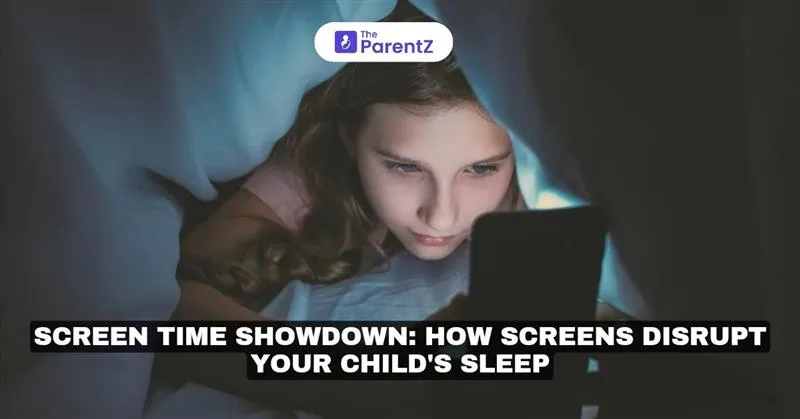The impact of screens on children's sleep has become a pressing concern for parents and health professionals alike. As technology continues to permeate every aspect of daily life, understanding how screen exposure affects sleep patterns is essential for promoting healthy habits in children. This blog will explore the evidence surrounding screen time and sleep, the mechanisms behind these effects, and practical strategies for parents to handle any negative impacts.
The Science Behind Screen Time and Sleep
Research consistently indicates that increased screen time, particularly before bedtime, is associated with poorer sleep outcomes in children. Children who engage with screens—whether through television, video games, or mobile devices—often experience delayed sleep onset, reduced total sleep time, and fragmented sleep cycles.
Mechanisms of Impact
Several mechanisms explain how screens can disrupt sleep:
- Blue Light Emission: Screens emit blue light, which suppresses the production of melatonin, the hormone responsible for regulating sleep-wake cycles. Melatonin levels typically rise in the evening as it gets dark, signaling the body to prepare for sleep. Exposure to blue light from screens can delay this process, leading to difficulties falling asleep.
- Cognitive Stimulation: Interactive screen activities—such as gaming or texting—are more stimulating than passive activities like watching TV. This heightened engagement can increase arousal levels and make it more challenging for children to wind down before bed. For instance, a study found that adolescents who engaged in interactive screen use before bed took an average of 30 minutes longer to fall asleep compared to those who refrained from such activities.
- Disruption of Circadian Rhythms: Regular late-night screen use can shift a child’s circadian rhythm, leading to a misalignment between their internal clock and external cues like school schedules. This misalignment can result in chronic sleep deprivation during the week, followed by excessive sleeping on weekends—a pattern known as social jetlag.
The Evidence
Recent studies underscore these concerns. For example, a randomized controlled trial conducted by researchers at the University of Bath demonstrated that removing screen time in the hour before bed significantly improved toddler sleep quality. Families that participated in this study reported fewer night awakenings and more efficient nighttime sleep after implementing a "screen-free" hour before bed.
Another study highlighted that for every hour spent using screens during the day for communication or gaming, children fell asleep approximately 10-15 minutes later than usual. This cumulative effect can lead to significant sleep loss over time, particularly when combined with early school start times.
Common Challenges Faced by Parents
Many parents struggle with managing their children's screen time, especially given the allure of digital devices. Here are some common issues:
- Resistance to Bedtime: Children may resist going to bed when they are engaged with screens, leading to power struggles.
- Inconsistent Routines: With varying schedules on weekends versus weekdays, children may find it difficult to maintain consistent sleep patterns.
- Social Pressures: Children may feel pressured to stay connected with friends through social media or gaming, further complicating bedtime routines.
Strategies for Managing Screen Time
To help mitigate the negative impacts of screens on children's sleep, parents can implement several strategies:
- Establish Screen-Free Zones: Create designated areas in your home where screens are not allowed, particularly in bedrooms. This helps reinforce the idea that these spaces are meant for rest.
- Set Clear Guidelines: Establish rules around screen use before bedtime. For example, you might implement a "no screens one hour before bed" policy and encourage alternative activities such as reading or puzzles during this time.
- Model Healthy Behavior: Children often mimic their parents' behaviors. By demonstrating healthy screen habits—such as putting away devices during family meals or engaging in non-screen activities—you set a positive example.
- Create a Calming Bedtime Routine: Incorporate calming activities into your child's bedtime routine that do not involve screens. This could include reading together, practicing relaxation techniques, or engaging in quiet play.
- Encourage Outdoor Play: Promote outdoor play during the day to help regulate circadian rhythms naturally. Exposure to natural light during daylight hours supports melatonin production at night.
- Monitor Content and Duration: Be aware of what your child is watching or playing on screens and limit total screen time according to age-appropriate guidelines set by pediatricians. Expert-Endorsed Guidelines:
Under 2 Years: Zero screen time
2-5 Years: Maximum 1 hour daily, high-quality content
6-12 Years: Maximum 2 hours, educational content preferred
Consistent bedtime digital detox
Conclusion
Protecting children's sleep isn't about complete digital elimination but creating a harmonious, scientifically informed approach to technology integration. Understanding the intricate mechanisms helps parents make informed, compassionate decisions.
Every screen interaction is a neurological negotiation. Your informed approach can safeguard your child's most critical developmental resource: quality sleep.








Be the first one to comment on this story.